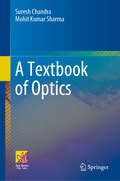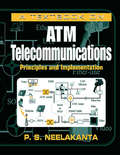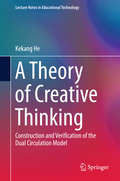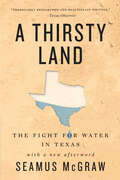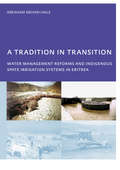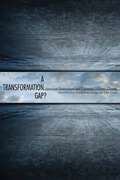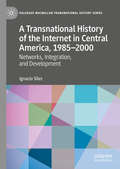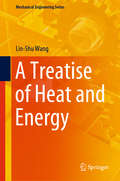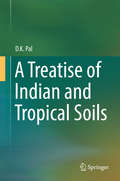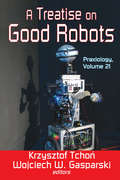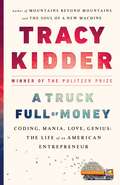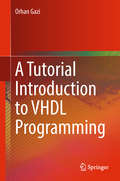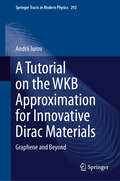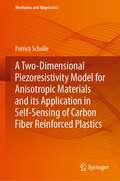- Table View
- List View
A Textbook of Optics
by Suresh Chandra Mohit Kumar SharmaThis book is designed to serve as a textbook for courses offered to upper-undergraduate students enrolled in physics and explains the broad spectrum of optics in a student-friendly way. The textbook covers the entire syllabi of the undergraduate courses being taught at both national and international universities including adequate details of mathematical expressions to help students understand the subject matter. The topics covered in this book are reflection, refraction, cardinal points, interference, Fresnel diffraction, Fraunhofer diffraction, lasers and holography, fiber optics, etc. This book explains each topic in a simple and lucid language with the help of solved problems. Exercises with multiple choice questions have been given at the end of each chapter for self-assessment. The detailed coverage and pedagogical tools make this an ideal textbook for students and researchers enrolled in senior undergraduate and beginning postgraduate physics students.
A Textbook on ATM Telecommunications: Principles and Implementation
by P. S. NeelakantaWith quantum leaps in science and technology occurring at breakneck speed, professionals in virtually every field face a daunting task-practicing their discipline while keeping abreast of new advances and applications in their filed. In no field is this more applicable than in the rapidly growing field of telecommunications engineering. Practicing engineers who work with ATM technology on a daily basis must not only keep their skill sharp in areas such as ATM network interfaces, protocols, and standards, but they must also stay informed, about new classes of ATM applications.A Textbook on ATM Telecommunications gives active telecommunications engineers the advantage they need to stay sharp in their field. From the very basics of ATM to state-of-the-art applications, it covers the gamut of topics related to this intriguing switching and multiplexing strategy. Starting with an introduction to telecommunications, this text combines the theory underlying broadband communications technology with applied practical instruction and lessons gleaned from industry. The author covers fundamental communications and network theory, followed by applied ATM networking. Each chapter includes design exercises as well as worked examples .A Textbook on ATM Telecommunications includes examples of design and implementation-making it an ideal took for both aspiring and practicing telecommunication professionals.Features
A Theoretical Introduction to Numerical Analysis
by Victor S. Ryaben'kii Semyon V. TsynkovA Theoretical Introduction to Numerical Analysis presents the general methodology and principles of numerical analysis, illustrating these concepts using numerical methods from real analysis, linear algebra, and differential equations. The book focuses on how to efficiently represent mathematical models for computer-based study. An access
A Theory of Creative Thinking: Construction and Verification of the Dual Circulation Model (Lecture Notes in Educational Technology)
by Kekang HeThis book examines research on creative thinking, both current and historical. It explores two dimensions of human thought (time and space) and two modes of thinking (conscious and unconscious) as well as both left and right brain functions and artistic and scientific creative activities. The book proposes a "Double Circulation" model of creative thinking and argues that imagery thinking, intuitive thinking and logical thinking are main parts of creative thinking and that dialectical thinking and horizontal-vertical thinking are the guides for highly complex problem-solving thoughts and strategies. The book focuses on education and psychology and also covers how to use ICT to promote students' creative thinking skills. Researchers will benefit from the "Double Circulation" model, which provides a new perspective on conducting creative thinking research. The book is also a valuable resource for graduate students in the fields of educational technology and psychology and for all readers who are interested in creative thinking.
A Thermochemical Heat Storage System for Households: Combined Investigations of Thermal Transfers Coupled to Chemical Reactions (Springer Theses)
by Armand Fopah LeleThe book offers a comprehensive report on the design and optimization of a thermochemical heat storage system for use in buildings. It combines theoretical and experimental work, with a special emphasis on model-based methods. It describes the numerical modeling of the heat exchanger, which allows recovery of about two thirds of the waste heat from both solar and thermal energy. The book also provides readers with a snapshot of current research on thermochemical storage systems, and an in-depth review of the most important concepts and methods in thermal management modeling. It represents a valuable resource for students, engineers and researchers interested in thermal energy storage processes, as well as for those dealing with modeling and 3D simulations in the field of energy and process engineering.
A Thirsty Land: The Fight for Water in Texas (Natural Resources Management and Conservation)
by Seamus McGraw“An important story not just about [Texas’s] water history, but also about its social, economic, and political identity” (Western Historical Quarterly).As a changing climate threatens the whole country with deeper droughts and more furious floods that put ever more people and property at risk, Texas has become a bellwether state for water debates. Will there be enough water for everyone? Is there the will to take the steps necessary to defend ourselves against the sea? Is it in the nature of Americans to adapt to nature in flux?The most comprehensive—and comprehensible—book on contemporary water issues, A Thirsty Land delves deep into the challenges faced not just by Texas but also by the nation, as we struggle to find a way to balance the changing forces of nature with our own ever-expanding needs. Part history, part science, part adventure story, and part travelogue, this book puts a human face on the struggle to master that most precious and capricious of resources, water. Seamus McGraw goes to the taproots, talking to farmers, ranchers, businesspeople, and citizen activists, as well as to politicians and government employees. Their stories provide chilling evidence that Texas—and indeed the nation—is not ready for the next devastating drought, the next catastrophic flood. Ultimately, however, A Thirsty Land delivers hope. This deep dive into one of the most vexing challenges facing Texas and the nation offers glimpses of the way forward in the untapped opportunities that water also presents.“A hard look at a hard problem: finding sufficient water to live in a place without much of it. . . . McGraw’s fine book serves as a useful guide. Observers of Western waterways will want to have this on their shelves alongside the likes of Marc Reisner and Charles Bowden.” —Kirkus Reviews“In stark prose that often gleams like a bone pile bleached in the sun, McGraw travels back and forth across Texas to give a free-ranging but deadeye view of the crisis on the horizon.” —Texas Monthly“It’s hard to write about the slow creep of environmental crises like drought without resorting to shock tactics or getting lost in the weeds . . . [McGraw] draws out the conflicts in compelling ways by drilling into the plight of individual water users. Even if you feel no connection to Texas, these stories are relevant to every part of the country.” —Outside“Interviewing both scientific experts and everyday water users, [McGraw] clearly delineates the competing interests, describes political and geological reality, and makes a compelling argument for statewide water policy that utilizes modern technology and fairly weighs parochial needs against the good of the whole.” —Arizona Daily Star, Southwest Books of the Year
A Thirsty Land: The Fight for Water in Texas (Natural Resources Management and Conservation)
by Seamus McGraw“An important story not just about [Texas’s] water history, but also about its social, economic, and political identity” (Western Historical Quarterly).As a changing climate threatens the whole country with deeper droughts and more furious floods that put ever more people and property at risk, Texas has become a bellwether state for water debates. Will there be enough water for everyone? Is there the will to take the steps necessary to defend ourselves against the sea? Is it in the nature of Americans to adapt to nature in flux?The most comprehensive—and comprehensible—book on contemporary water issues, A Thirsty Land delves deep into the challenges faced not just by Texas but also by the nation, as we struggle to find a way to balance the changing forces of nature with our own ever-expanding needs. Part history, part science, part adventure story, and part travelogue, this book puts a human face on the struggle to master that most precious and capricious of resources, water. Seamus McGraw goes to the taproots, talking to farmers, ranchers, businesspeople, and citizen activists, as well as to politicians and government employees. Their stories provide chilling evidence that Texas—and indeed the nation—is not ready for the next devastating drought, the next catastrophic flood. Ultimately, however, A Thirsty Land delivers hope. This deep dive into one of the most vexing challenges facing Texas and the nation offers glimpses of the way forward in the untapped opportunities that water also presents.“A hard look at a hard problem: finding sufficient water to live in a place without much of it. . . . McGraw’s fine book serves as a useful guide. Observers of Western waterways will want to have this on their shelves alongside the likes of Marc Reisner and Charles Bowden.” —Kirkus Reviews“In stark prose that often gleams like a bone pile bleached in the sun, McGraw travels back and forth across Texas to give a free-ranging but deadeye view of the crisis on the horizon.” —Texas Monthly“It’s hard to write about the slow creep of environmental crises like drought without resorting to shock tactics or getting lost in the weeds . . . [McGraw] draws out the conflicts in compelling ways by drilling into the plight of individual water users. Even if you feel no connection to Texas, these stories are relevant to every part of the country.” —Outside“Interviewing both scientific experts and everyday water users, [McGraw] clearly delineates the competing interests, describes political and geological reality, and makes a compelling argument for statewide water policy that utilizes modern technology and fairly weighs parochial needs against the good of the whole.” —Arizona Daily Star, Southwest Books of the Year
A Thousand Ways Denied: The Environmental Legacy of Oil in Louisiana
by John T. ArnoldFrom the hill country in the north to the marshy lowlands in the south, Louisiana and its citizens have long enjoyed the hard-earned fruits of the oil and gas industry’s labor. Economic prosperity flowed from pioneering exploration as the industry heralded engineering achievements and innovative production technologies. Those successes, however, often came at the expense of other natural resources, leading to contamination and degradation of land and water. In A Thousand Ways Denied, John T. Arnold documents the oil industry’s sharp interface with Louisiana’s environment. Drawing on government, corporate, and personal files, many previously untapped, he traces the history of oil-field practices and their ecological impacts in tandem with battles over regulation. Arnold reveals that in the early twentieth century, Louisiana helped lead the nation in conservation policy, instituting some of the first programs to sustain its vast wealth of natural resources. But with the proliferation of oil output, government agencies splintered between those promoting production and others committed to preventing pollution. As oil’s economic and political strength grew, regulations commonly went unobserved and unenforced. Over the decades, oil, saltwater, and chemicals flowed across the ground, through natural drainages, and down waterways. Fish and wildlife fled their habitats, and drinking-water supplies were ruined. In the wetlands, drilling facilities sat like factories in the midst of a maze of interconnected canals dredged to support exploration, manufacture, and transportation of oil and gas. In later years, debates raged over the contribution of these activities to coastal land loss.Oil is an inseparable part of Louisiana’s culture and politics, Arnold asserts, but the state’s original vision for safeguarding its natural resources has become compromised. He urges a return to those foundational conservation principles. Otherwise, Louisiana risks the loss of viable uses of its land and, in some places, its very way of life.
A Time Apart
by Diane StanleyWhile her mother undergoes treatment for cancer, thirteen-year-old Ginny is sent to live with her father in England. Once there, she becomes part of an archaeological experiment that investigates life during the iron age.
A Tool for Determining e-Learning Readiness (SpringerBriefs in Educational Communications and Technology)
by Katherine Cennamo Cathy James-SpringerThis book presents a tool to determine e-learning readiness in workplace organizations. It offers a case study of the design and development process and outlines factors to be taken into account to determine e-learning readiness. It details the four objectives of this tool: to highlight specific parameters for determining e-learning readiness, to provide a systematic process to determine the readiness of an organization, to enable flexibility for the environmental context, and to capture the interrelatedness of the many areas in the organization. Next, it discusses the main element of the tool: surveys that are used to facilitate collection of data on organizational, learner and technology readiness. The book concludes with a look at practical ways of using the information gathered from the data produced.
A Tradition in Transition, Water Management Reforms and Indigenous Spate Irrigation Systems in Eritrea: PhD, UNESCO-IHE Institute for Water Education, Delft, The Netherlands
by Abraham Mehari HaileA Tradition in Transition presents an in-depth assessment of the century-old Wadi Laba indigenous spate irrigation system in Eritrea. This system has relied on earthern and brushwood structures and customary water rules to support subsistence livelihoods of the Wadi Laba communities for many years. The book presents original research, which analyzes the effectiveness of contemporary water laws and a new headwork in improving production and standard of living. It also compares the lack of success of these new approaches with traditional methods of water management.
A Transdisciplinary Introduction to the World of Cybernetics: Basics, Models, Theories and Practical Examples
by E. W. KüppersThis introduction to the world of cybernetics provides the basics and discusses the most important thought leaders, models as well as theories. Practical examples from the fields of biology, ecology, technology, society, and politics are used to illustrate the theoretical material. Questions at the end of the chapters stimulate reflection, and the author does not owe the answers. A central theme in all cybernetic considerations and a guiding theme of the book are information exchange and communication.
A Transformation Gap?
by Theo Farrell Terriff Terry Osinga FransThis study, edited by Terriff (American security policy, U. of Calgary, Canada), Osinga (war studies, Royal Netherlands Military Academy) and Farrell (war studies, King's College London, UK), examines the extent to which there are gaps in the military transformation being led by the United States between various European members of the North Atlantic Treaty Organization. Case studies are presented for Britain, France, Germany, Spain, the Netherlands, and Poland. The case studies follow a common analytical framework that breaks transformation down into network-enablement, effects based operations, and expeditionary warfare and, for each of these, in terms of their respective technological, doctrinal, and organizational elements. These elements are further considered in light of the scholarly literature on military innovation, norm diffusion, and alliance theory. Stanford Security Studies is an imprint of Stanford University Press. Annotation ©2011 Book News, Inc. , Portland, OR (booknews. com)
A Transnational History of the Internet in Central America, 1985–2000: Networks, Integration, and Development (Palgrave Macmillan Transnational History Series)
by Ignacio SilesThis Palgrave Pivot analyzes how six countries in Central America—Costa Rica, El Salvador, Guatemala, Honduras, Nicaragua and Panama—connected to and through computer networks such as UUCP, BITNET and the Internet from the 80s to the year 2000. It argues that this story can only be told from a transnational perspective. To connect to computer networks, Central America built a regional integration project with great implications for its development. By revealing the beginnings of the Internet in this part of the world, this study broadens our understanding of the development of computer networks in the global south. It also demonstrates that transnational flows of knowledge, data, and technologies are a constitutive feature of the historical development of the Internet.
A Trash-Free Future?
by Alison Pearce StevensWhat happens to trash after the garbage truck picks it up? Where does it go? The problem of too much trash is hurting the planet. Recycling, reusing, composting and creating new ways to make less trash is a start! Learn to recycle old furniture, and how safer materials are being developed that can easily decompose. People are working hard every day on new ways to have a trash-free future! Are you?
A Treatise of Heat and Energy (Mechanical Engineering Series)
by Lin-Shu WangThis textbook explains the meaning of heat and work and the definition of energy and energy systems. It describes the constructive role of entropy growth and makes the case that energy matters, but entropy growth matters more. Readers will learn that heat can be transferred, produced, and extracted, and that the understanding of generalized heat extraction will revolutionize the design of future buildings as thermal systems for managing low grade heat and greatly contribute to enhanced efficiency of tomorrow’s energy systems and energy ecosystems. Professor Wang presents a coherent theory-structure of thermodynamics and clarifies the meaning of heat and the definition of energy in a manner that is both scientifically rigorous and engaging, and explains contemporary understanding of engineering thermodynamics in continuum of its historical evolution. The textbook reinforces students’ grasp of concepts with end-of-chapter problems and provides a historical background of pioneering work by Black, Laplace, Carnot, Joule, Thomson, Clausius, Maxwell, Planck, Gibbs, Poincare and Prigogine.Developed primarily as a core text for graduate students in engineering programs, and as reference for professional engineers, this book maximizes readers’ understanding and shines a light on new horizons for our energy future.
A Treatise of Indian and Tropical Soils
by D. K. PalThis book discusses how to apply the basic principles of pedology to the tropical soils of the Indian subcontinent, with an emphasis on ways to enhance crop productivity. The book showcases the research contributions on pedology, geomorphology, mineralogy, micromorphology and climate change collected from the literature on three major soil types: shrink-swell soils, red ferruginous (RF) soils and the soils that occur in the tropical environments of the Indo-Gangetic Plains (IGP). It also provides insights into several aspects of five pedogenetically important soil orders like Alfisols, Mollisols, Ultisols, Vertisols and Inceptisols found in tropical Indian environments. Documenting the significance of minerals in soils and their overall influence in soil science in terms of pedology, paleopedology, polygenesis and edaphology, it provides a knowledge base that is critical when attempting to bridge the gap between food production and population growth.
A Treatise on Corrosion Science, Engineering and Technology (Indian Institute of Metals Series)
by Radhakrishna G. Pillai U. Kamachi Mudali Toleti Subba Rao S. Ningshen Rani P. George T. M. SridharThis volume elaborates on various corrosion processes in different applications and their prevention strategies. It comprehensively covers the principles of corrosion, engineering issues, methods of corrosion protection and defines corrosion processes and control in select aggressive end industrial environments. The contents especially focus on corrosion issues in nuclear, aerospace, marine, high temperature, bioimplants, automobile, and addresses the application of advanced materials to mitigate them. A special section on corrosion prevention strategies with innovative solutions to resolve corrosion issues in various environments is the highlight of this book. This volume will be a useful guide for those in research, academia and industry, particularly to know state of art in corrosion control and prevention for various practical applications.
A Treatise on Good Robots
by Krzysztof TchonThis volume investigates the ways emerging technologies in the fields of robotics and bio-robotics are influencing society. It necessarily considers both philosophical and technological study of robots, including what it means for robots to exist as good and moral entities, and how they benefit humans and enhance their quality of life. Contributors address artificial intelligence and social functions as well as technical matters. Chapters are wide-ranging, and consider robots in science fiction; the need for designers to create moral robots; specific technology; and the development of biological robots. Also addressed are robotic technologies already enhancing human bodies, such as exoskeletons that allow paraplegics to walk. The contributors foresee robots becoming involved not only in mundane domestic tasks such as washing dishes, but also in providing health care to the disabled and companionship to the elderly. This volume offers exciting philosophical reflections that unveil new connections between robotics and praxiology and their practical applications.
A Trip into Space
by Lori Haskins Houran Francisca MarquezA lively, rhythmical story and detailed illustrations take readers on a trip to the International Space Station, where astronauts work, sleep, and walk in space! This great read-aloud includes the latest information (verified by NASA staff) about the ISS. Fact-filled and fun, this story will send young minds soaring.This is a fixed-format ebook, which preserves the design and layout of the original print book.
A Truck Full of Money: One Man's Quest to Recover from Great Success
by Tracy Kidder"A perfectly executed, exquisitely reported parable of the Internet age and the wild, mad adventure that is start-up culture."--Charles Duhigg Fortune, mania, genius, philanthropy--the bestselling author of Mountains Beyond Mountains gives us the inspiring story of Paul English, the founder of Kayak.com and Lola. Tracy Kidder, the "master of the nonfiction narrative" (The Baltimore Sun) and author of the bestselling classic The Soul of a New Machine, now tells the story of Paul English, a kinetic and unconventional inventor and entrepreneur, who as a boy rebelled against authority. Growing up in working-class Boston, English discovers a medium for his talents the first time he sees a computer. As a young man, despite suffering from what would eventually be diagnosed as bipolar disorder, he begins his pilgrim's journey through the ups and downs in the brave new world of computers. Relating to the Internet as if it's an extension of his own mind, he discovers that he has a talent for conceiving innovative enterprises and building teams that can develop them, becoming "a Pied Piper" of geeks. His innovative management style, success, and innate sense of fair play inspire intense loyalty. Early on, one colleague observes: "Someday this boy's going to get hit by a truck full of money, and I'm going to be standing beside him." Yet when English does indeed make a fortune, when the travel website Kayak is sold for almost two billion dollars--the first thing he thinks about is how to give the money away: "What else would you do with it?" The second thing he thinks is, What's next? With the power of a consummate storyteller, Tracy Kidder casts a fresh, critical, and often humorous eye on the way new ideas and new money are reshaping our culture and the world. A Truck Full of Money is a mesmerizing portrait of an irresistibly endearing man who is indefatigable, original, and as unpredictable as America itself. Advance praise for A Truck Full of Money"A perfectly executed, exquisitely reported parable of the Internet age, and the wild, mad adventure that is start-up culture."--Charles Duhigg "A Truck Full of Money brings us into unknown spaces of the complex workings of the mind--of a brilliant software engineer, of this new decade, of the brutal/fast business of technology, of stunning privilege, and of one man's efforts to put his fortune to humane use."--Adrian Nicole LeBlanc"The story of [an] entrepreneur's remarkable life [and] the new American economy and the technological world that built it. More engrossing work from a gifted practitioner of narrative nonfiction."--Kirkus ReviewsFrom the Hardcover edition.
A Tutorial Introduction to VHDL Programming
by Orhan GaziThis book helps readers create good VHDL descriptions and simulate VHDL designs. It teaches VHDL using selected sample problems, which are solved step by step and with precise explanations, so that readers get a clear idea of what a good VHDL code should look like.The book is divided into eight chapters, covering aspects ranging from the very basics of VHDL syntax and the module concept, to VHDL logic circuit implementations. In the first chapter, the entity and architecture parts of a VHDL program are explained in detail. The second chapter explains the implementations of combinational logic circuits in VHDL language, while the following chapters offer information on the simulation of VHDL programs and demonstrate how to define data types other than the standard ones available in VHDL libraries. In turn, the fifth chapter explains the implementation of clocked sequential logic circuits, and the sixth shows the implementation of registers and counter packages. The book’s last two chapters detail how components, functions and procedures, as well as floating-point numbers, are implemented in VHDL. The book offers extensive exercises at the end of each chapter, inviting readers to learn VHDL by doing it and writing good code.
A Tutorial on the WKB Approximation for Innovative Dirac Materials: Graphene and Beyond (Springer Tracts in Modern Physics #292)
by Andrii IurovThis textbook serves to supplement existing quantum mechanics courses with the WKB (Wentzel–Kramers–Brillouin) theory for recently discovered Dirac materials, such as graphene, a dice lattice, and alpha-T3 materials. This includes finding the semiclassical wave function, coordinate-dependent momentum, semiclassical action, the complete set of transport equations, and applicability conditions for the approximation. The discovery of graphene and its unique electronic behavior has transformed research in condensed matter physics over the last 10-15 years, but core curriculum in standard graduate-level physics courses still does not reflect these new developments and this book intends to close this gap. With a clear focus on various types of Dirac Hamiltonians, the multidimensional theory is only a small part of the book. The derivation of the WKB equations for novel Dirac materials and their applications to electron tunneling, turning points and classically forbidden regions, resonances and localized states, and many other crucial physical problems are methodically presented. This textbook aims to expand the existing approach to presenting the WKB approximation and covers recent developments in its applications. This book also includes many informative graphics, as well as problems and exercises with hints at the end of each chapter. Additional detailed mathematical derivations, as well as code in Mathematica, are added throughout the whole book. Ideal for graduate students and researchers in condensed matter physics, this textbook serves as a modern guide for learning the WKB theory.
A Two-Dimensional Piezoresistivity Model for Anisotropic Materials and its Application in Self-Sensing of Carbon Fiber Reinforced Plastics (Mechanics and Adaptronics)
by Patrick ScholleThis thesis works on the topic of fiber-reinforced plastics and discusses the measurement of strain with embedded sensors. Embedding sensors into a structure fundamentally poses challenges arising from the differences in mechanical properties of sensor and structure. This thesis works on the research area of Self-Sensing, where these challenges are overcome by using carbon fibers for both load-carrying and strain-sensing functions. Starting with a literature review, this thesis proposes three research hypotheses, which are targeted to describe the Self-Sensing properties of unidirectional carbon fiber reinforced plastics (CFRPs) for strain measurements. These hypotheses assume, that the electric anisotropy of the material results in a complex voltage distribution within a Self-Sensing specimen. In order to discuss this point further, a two-dimensional piezoresistivity model based on the Laplace equation is introduced. The developed model newly allows to quantify the electric potential changes in specimens with arbitrary geometrical dimensions and electric anisotropy.Furthermore, this thesis discusses a set of experimental results on the piezoresistive properties of unidirectional CFRP made with the pultrusion process. Overall, the results of the experiments indicate that the most repeatable results are obtained for specimens with electric contacts at their cut-end. This approach allows to manufacture Self-Strain-Sensing rods with a gauge factor of approximately 1.9 that can be used in a multifunctional manner for both load-carrying and strain-sensing purposes. Furthermore, a novel measurement setup is developed, which allows to acquire the electric potential distribution on the surface of electrical conductors with very high spacial resolution. This experimental setup newly reveals that the current flow in specimens can be more complex than assumed in a two-dimensional model.
A Two-Step Perturbation Method in Nonlinear Analysis of Beams, Plates and Shells
by Hui-Shen ShenThe capability to predict the nonlinear response of beams, plates and shells when subjected to thermal and mechanical loads is of prime interest to structural analysis. In fact, many structures are subjected to high load levels that may result in nonlinear load-deflection relationships due to large deformations. One of the important problems deserving special attention is the study of their nonlinear response to large deflection, postbuckling and nonlinear vibration. A two-step perturbation method is firstly proposed by Shen and Zhang (1988) for postbuckling analysis of isotropic plates. This approach gives parametrical analytical expressions of the variables in the postbuckling range and has been generalized to other plate postbuckling situations. This approach is then successfully used in solving many nonlinear bending, postbuckling, and nonlinear vibration problems of composite laminated plates and shells, in particular for some difficult tasks, for example, shear deformable plates with four free edges resting on elastic foundations, contact postbuckling of laminated plates and shells, nonlinear vibration of anisotropic cylindrical shells. This approach may be found its more extensive applications in nonlinear analysis of nano-scale structures. Concentrates on three types of nonlinear analyses: vibration, bending and postbuckling Presents not only the theoretical aspect of the techniques, but also engineering applications of the method A Two-Step Perturbation Method in Nonlinear Analysis of Beams, Plates and Shells is an original and unique technique devoted entirely to solve geometrically nonlinear problems of beams, plates and shells. It is ideal for academics, researchers and postgraduates in mechanical engineering, civil engineering and aeronautical engineering.
